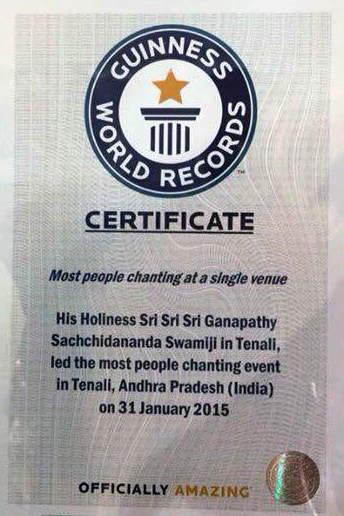(A portion of Video is missing. The translation however covers the entire episode as telecast).
Kujantam raama raameti madhuram madhuraaksraam
Aaruhya kavitaasaakhaam vande Valmiki kokilam
Meaning- I offer my obeisance to the sweet cuckoo named Valmiki, who has seated himself atop the branch named poetry and who melodiously, sweetly and poetically sings ‘Rama, Rama’
Ajnanananadanam veeram jaanaki soka naashanam
Kapeesam akshahantaaram vande lanka bhayankaram
Meaning- I prostrate to Hanuman, who is the son of Anjana Devi, who was the leader of all the Vanaras, who killed the demon named Aksha, who drove away the sorrows of Mother Sita (Janaki) and who caused a fright amongst all the demons in Lanka.
Veda vedye pare pumsi jaate dasarathaatmaje
Vedaha praacheta daaseet saakshaad ramaayanaatmanaa
Ramaaya raamabhadraya ramachandraaya vedhase
Raghunaathaaya naathaaya seetaayah pataye namah.
Meaning- I bow down to Rama who is Ramachandra and Ramabhadra. He is the Lord of the entire universe. He is the most superior in the lineage of Raghu’s dynasty. He is the husband of Sita.
With these prayers, we are now stepping into Shata Shloki Ramayana.
Tapassvaadhaaya niratam tapasvi vaagvidaam varam
Naaradam paripapraccha Valmiki rmunipungavam.
Srimad Ramayana is the very first composition in this creation (Adi Kaavya). The greatest amongst the mantras is the Gayatri mantra. To emphasize that this Ramayana is as powerful as the Gayatri mantra, Maharishi Valmiki begins this Ramayana with the syllable ‘ta’ (ta-kaara). Let us recollect here that the Gayatri mantra also begins with the syllable ‘ta’.
A person who is ever absorbed in penance (tapas) and in study of the Vedas can be said to be the greatest among the learned Vedic scholars. Maharishi Narada is the best among all such Veda scholars. Maharishi Valmiki, who was ever interested in penance (tapas) approached Maharishi Narada and asked him in the following manner. This is the meaning behind this hymn.
Now let us understand the deeper hidden meaning of this hymn. This great composition known as Ramayana, has begun during tapas (penance) and has begun with the word ‘tapas’ (penance).
Every one should have the burning desire (tapana) to know about God. Every one should perform tapas (penance). Recitation of mantra (japa) received from one’s Spiritual Guru should mandatorily be performed every single day. Negligence in this aspect is not accepted. Those who have not received any initiation from their Guru should recollect and recite the names of God every single day without fail.
‘Japato nāsti pātakam’ means sins do not attach to those who undertake nama japa and tapas (penance). All our Scriptures re-iterate this.
‘Swaadhyaya’ means swa+adhyaaya. ‘Swa’ means Self or that which relates to one’s Self. ‘Adyāya’ means study. It means that each one should mandatorily, without any negligence and without fail engage in Self-study.
Here, study means, not only re-collecting that which has been learnt in the past, but also acquiring newer knowledge. Association with highly knowledgeable saints (jnanis) should be developed. What is learnt should as far as possible be shared with the others.
These are the important lessons that are hidden within the phrase ‘tapassvādhyāya niratam’.
The next word in the hymn is ‘tapasvi’. On the face of it, it may appear as if Valmiki Maharishi is indulging in self-praise by addressing himself as ‘tapasvi’ (great ascetic). This is incorrect. It was only after performing intense tapas for an exceptionally long period of time, that Valmiki Maharishi could get the chance to compose the wonderful epic Ramayana. Penance is a very essential pre-requisite for acquiring the grace of Rama.
Narada was Valmiki’s Guru. We have discussed many a time that without a Guru a person cannot reach his goal. Not everyone can become Gurus.
Narada is a storehouse of tremendous and infinite knowledge. He is a great devotee of the Supreme Lord and is modest and unegoistic.
Maharishi Valmiki put forth his questions to Maharishi Narada. It is not right to put forth our doubts in front of everyone whom we come across. For doubt clarification we should approach only that person who can resolve it completely and thoroughly.
‘Nārā’ means one who distributes knowledge to all the planes (worlds, loka). Hence Nārada who forever distributes knowledge across all planes has been named thus.
Hence very wisely, Maharishi Valmiki approached Narada. Upon approaching him, Valmiki did not display the disrespectful attitude, “Anyway you are always passing on your knowledge to others. Give me a little”. On the contrary, Valmiki approached Narada with feelings of humility and devotion. He served Narada with devotion and then put forth his questions. For this reason, the term ‘Paripa praccha’ has been used.
Valmiki was not the real name of this Maharishi. It was a title that was bestowed upon him.
It is said that unless the feelings of ‘I’ and ‘mine’ are totally given up, Guru’s grace cannot be procured.
Om Seeta raamaabhyaam namaha.

